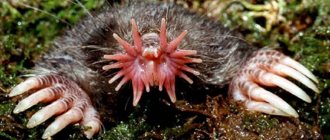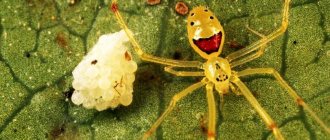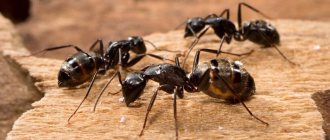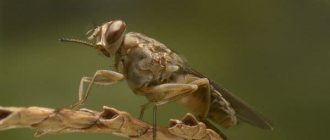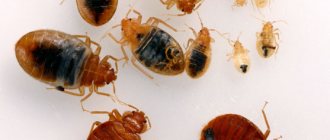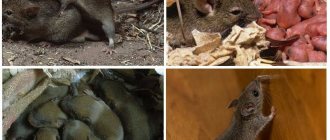Appearance assessment
An adult female gives birth to rat pups a month after her fertilization. The baby is born bald, blind and deaf. He has:
- blunt muzzle;
- pointed ears pressed to the head;
- thick short tail.
Within a week, the baby rat is covered with short fur, soft to the touch. He has small antennae. A rat's tail becomes longer as it ages. On the thirteenth day after birth, the pups' eyes open, but the rats' vision is not sharp. They begin to get out of the nest and explore the world.
Three to four weeks after their birth, the pups become adult rodents. But they haven't fully grown yet. Their length will be the same as that of a mouse. Therefore, people often confuse baby rats with voles.
It may take more than one week to analyze all the representatives of the subspecies that are found on our planet. There are more than 64 species of rats alone, and about 147 species of mice. Therefore, for the so-called base, we will take ordinary gray rats and house mice with voles that live in our climatic zone.
On European territory you can still find black synanthropic pests. But they are found mainly on the Pacific coast and in Eastern Siberia. They are more often called ship rats, because ports and watercraft are their favorite habitats.
Dimensions
The length of the gray rat can reach 30 cm, with a weight of 500-600 grams. There are also very small pests - up to 8 cm, but this is rare for our climate zone. The average length of a vole mouse is around 5-6 cm, and its weight ranges from 30-40 g.
Mating and pregnancy in rodents
Photos of little rats and mice
There is practically not a single person who has not encountered mice or their cousins, rats, at least once in their life.
Night rattles and rustling that prevent you from falling asleep, spoiled food, chewed furniture - all this indicates the appearance of unexpected guests in your home. Some tirelessly fight with them, showing who is boss, while others, on the contrary, deliberately bring them into their homes, taming them and making them their favorites.
However, one should not ignore the fact that both mice and rats are the source of all sorts of dangerous diseases . Therefore, it is imperative to fight them. In order to choose the right method for getting rid of rodents, you need to know what their differences are.
And if in adults the difference is obvious - rats are much larger than mice, then what little rats and mice look like remains a question for many of us.
Life cycle
On average, ordinary gray rats live about 3-5 years. Larger black individuals are 4-6 years old. The lifespan of mice is 3 years. Both are extremely fertile, and the family is growing by leaps and bounds.
Pregnancy in rats proceeds very quickly - about 24 days, and in mice about 18. There are more than 10 individuals in one litter. There may be 7-10 cases of pregnancy per year. So they gain numbers with amazing speed, especially in favorable conditions: a good climate and constant access to food.
Interesting facts about animals
Regardless of size, adult rodents of both species can have a litter of more than 15 or as few as two or three cubs. On average, one litter can contain about 9 cubs.
An interesting fact is that these two types of rodents cannot interbreed. Moreover, they are enemies.
Another curious factor that distinguishes the animals from each other is that the mental abilities of rats are head and shoulders above the abilities of their smaller brothers. Scientists have discovered that they are endowed with abstract thinking, thus putting rats on the same level as us, the only creatures that have this ability.
They will never live where they are in danger; before moving in, they will definitely study the upcoming living conditions. And finally, the rat community lives according to strict laws, strictly observing the hierarchy.
Mice are endowed with intelligence to a much lesser extent . Therefore, the methods of dealing with them are simpler and less sophisticated; for example, glue traps are inexpensive, easy to use and quite effective.
Rats are quite aggressive creatures. Sensing real danger, they are ready to attack even a person. In any case, these animals are not timid. Even if they are not going to attack, they are also in no hurry to run - freezing in place, they cautiously assess the situation and wait.
Their smaller brothers are not so brave; on the contrary, they are very timid. At the slightest rustle they run wherever their eyes look.
Pregnancy
https://www.youtube.com/watch?v=g4Xzw2RyNkA
- Decorative mice - reviews
At home, individuals of the opposite sex live in different cages and live together during the mating season. Wild mice mate with several males at once, this increases the chances of “success”.
We invite you to familiarize yourself with: Bars insectoacaricidal collar for cats for protection against fleas for 5 months, against ticks for 4 months
Small rodents bear their young for about 24 days. The pet's diet is increased by 1/3 in the first stage of pregnancy, and by half before birth. The general well-being of the female and the well-being of pregnancy depend on what the mouse eats.
During pregnancy, it is necessary to keep the cage clean, leave paper, pieces of fabric, and hay. So that the mother mouse prepares a nest, a place for childbirth.
When can you pick up baby rats?
Touching baby rats immediately after birth is highly discouraged! The mother can eat a baby with a human smell, and there is also a chance of accidentally damaging the newborn’s thin bones.
Towards the end of the second week of life, you can briefly remove the newborns from the nest in the absence of the female, examine the pups and determine the sex of the animals. It is advisable to do this while wearing medical gloves or thoroughly washed hands so that the female does not abandon the brood.
From the end of the second week, you can take the babies out of the cage, often in the presence of the mother, so that the rat trusts you and does not worry about the children. Rats at this age are unusually nimble and inquisitive, while the female is on a walk every day, it is advisable to accustom the rats to friendly human communication: carefully carry in two palms, stroke, talk in a gentle voice, wear in the sleeve and in the bosom. Wary tiny animals quickly get used to people and begin to trust them.
IMPORTANT. Lack of active close communication with a person at a young age can make a pet fearful or aggressive towards humans.
Young animals
The dimensions of a young rat pup are similar to those of an adult mouse. If we are talking about a black rat, then even a newborn animal is almost twice the size of an average vole. Other distinctive features are comparable to those of adult individuals.
One of the most common problems is distinguishing a small rat from an adult mouse. They are very similar and are often confused. Young rats have a pronounced blunt-nosed muzzle, while an ordinary mouse has a pointed muzzle.
The baby rat's tail is noticeably smaller, despite the large number of scaly rings (about 220). The vole's appendage is approximately equal to the length of its body, but with fewer rims (about 180). Rats have noticeable folds on their soles, while mice are smooth in this area. You can also distinguish two individuals by the size of their ears. In young rats they are shorter.
How is it different from an adult mouse?
A rat reaches its maximum size by one year. The appearance of a rat at the age of one month is similar in appearance to an adult mouse. People who do not know the difference between baby rats and adult voles use the wrong control tactics and therefore cannot get rid of pests.
The easiest way to identify a mammal is by the track it leaves on damp ground. A rat's feet are webbed, so a print with widely spaced toes and folds between them will be visible on the ground. Rat tracks in the snow are clearly visible.
Interesting!
The size of a month-old baby rat's paw is no different from the size of an adult mouse's foot.
Animals also move differently. The mouse minces and the rat jumps. If the tracks on the ground are located close to each other, then there was a hole running through here.
Cubs
Mice are born naked, blind, deaf, with undeveloped limbs. But they have an excellent appetite, and significant changes occur daily in physical development:
It is not recommended to pick up small babies, as the mouse may refuse them. But from the 20th day of life, this must be done so that the mouse grows tame. At 30 days, the offspring become independent and can be given to other hands.
Mice reproduce quickly; under comfortable conditions, the process can continue continuously. But the female spends a lot of energy on feeding the mice, pregnancy, and childbirth. Therefore, the higher the birth rate, the weaker the health of the adult.
Source
All about baby mice
Content
Few people have been able to see baby mice, except perhaps those who breed these animals. But breeders claim that success in this fascinating activity is impossible without certain knowledge about the reproduction of rodents. Therefore, we will find out how many times a year a mouse can give birth without harm to health, how many cubs there are in one litter, and what kind of care they need.
How does mating happen?
Males are ready to breed at any time, but they become especially interested in mating during the female's estrus. At home, mice of different sexes are kept separately. A female is placed with a male only for mating. When rodents live together permanently, the mouse gives birth to one litter after another. This will negatively affect her health.
A female can only give birth to cubs if she meets a male during estrus. During this short period of time, her behavior changes. In the presence of a male, she raises the back of her body and freezes in this position for several seconds.
The acquaintance of opposite-sex individuals does not last long. The male then approaches from behind and performs sexual intercourse. Coitus alone is not enough to conceive babies. It is advisable to leave the couple together for a day to allow several mating attempts to occur. Then the probability of the mouse having babies will increase significantly. In the intervals between mating games, rodents eat, drink water and wash their fur.
Attention! The female should be placed in a separate cage the day after her meeting with the male. She needs rest while bearing her cubs.
In the wild, rodents breed only in the warm season. House mice breed all year round. The animal owner must control this process. Rodentologists recommend mating a female with a male 4-5 times a year. Due to frequent pregnancies and childbirths, immunity decreases and the risk of stillbirth or non-viable babies increases.
Physiological abilities
In the wild, the process of pregnancy and birth is regulated independently and directly depends on climatic conditions and the availability of food. At home, a lot depends on the person.
The mouse becomes sexually mature at the age of 30 to 50 days, depending on the variety and living conditions. However, the final formation of the animal ends by 12 months. Early fertilization can cause significant harm to the body, and the animal runs the risk of dying during childbirth.
It is allowed to mate a domestic mouse at 6 months; in nature, this moment occurs a little earlier. In a year, a female can reproduce up to 8 offspring. But this rarely happens, for several reasons.
On average, one mouse gives birth 4 times per year. The ability to fertilize appears 14 hours after birth. The estrus period lasts 18 hours. The entire mating season is very fast - 5 days.

